Last year, I visited the Twinings shop at 216 Strand and left with a lot of tea, including the Twinings Golden Rose Hearts. I’ve been treasuring it ever since, opening one small cake at a time. At the same time, I also asked Cher if any of her tea farmer contacts knew people who were pressing tea into these cute shapes. While she could not find any black tea with rose, she did find puer with rose mini cakes!
So at the risk of both becoming tea drunk and experiencing the side effects of too much rose, I decided to do a tea comparison! How would a black tea with rose stack up against a puer with rose?
Appearance
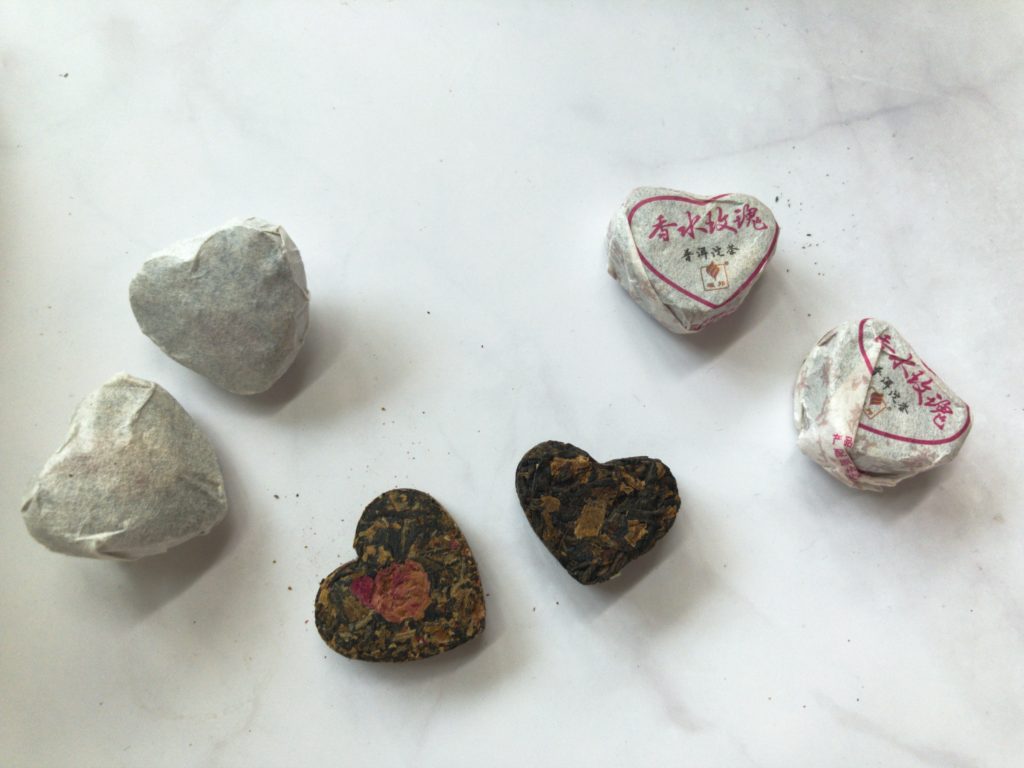
Both teas look pretty similar. You can see bits of rose petals mixed in with the tea. The biggest difference between the two is that there’s a rosebud in the middle of the Twinings Black Tea with Rose while the Puer with Rose has a hole on one side (probably so you can wrap it neatly)
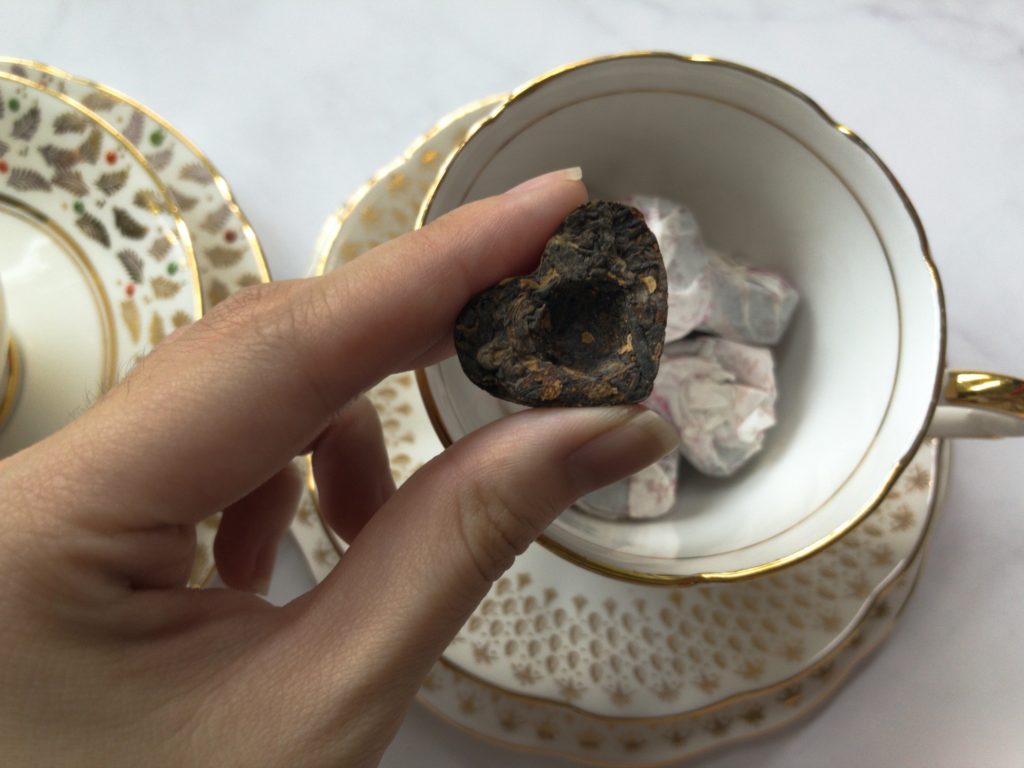
Taste
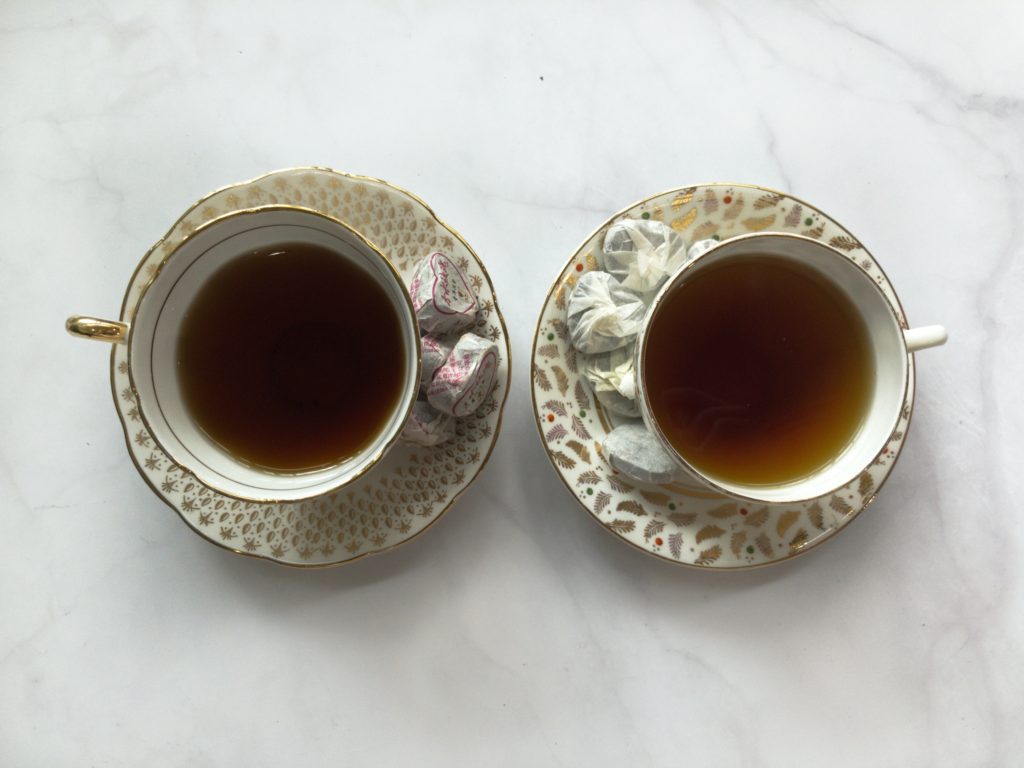
Both teas brew up rather dark. The rose notes are very strong in the black tea and rose but it’s not overbearingly floral (my greatest fear when it comes to floral teas). The malty notes are pretty strong but it’s the intensity of the sweetness that surprised me. But, another tea tasting we did with rosebuds we blended into black teas also showed an increased sweetness overall, so I’m thinking it’s the rose enhancing the black tea’s sweetness here. (Also, I checked the ingredient list and only ingredients are black tea and rose)
For the puer rose, the brew is dark but not too strong. Unlike the black tea, the rose notes here are softer and linger in the background. But I find this to be lighter, especially compared to the ripe puers that you can easily buy, and with a bit more sweetness. The rose at work, maybe?
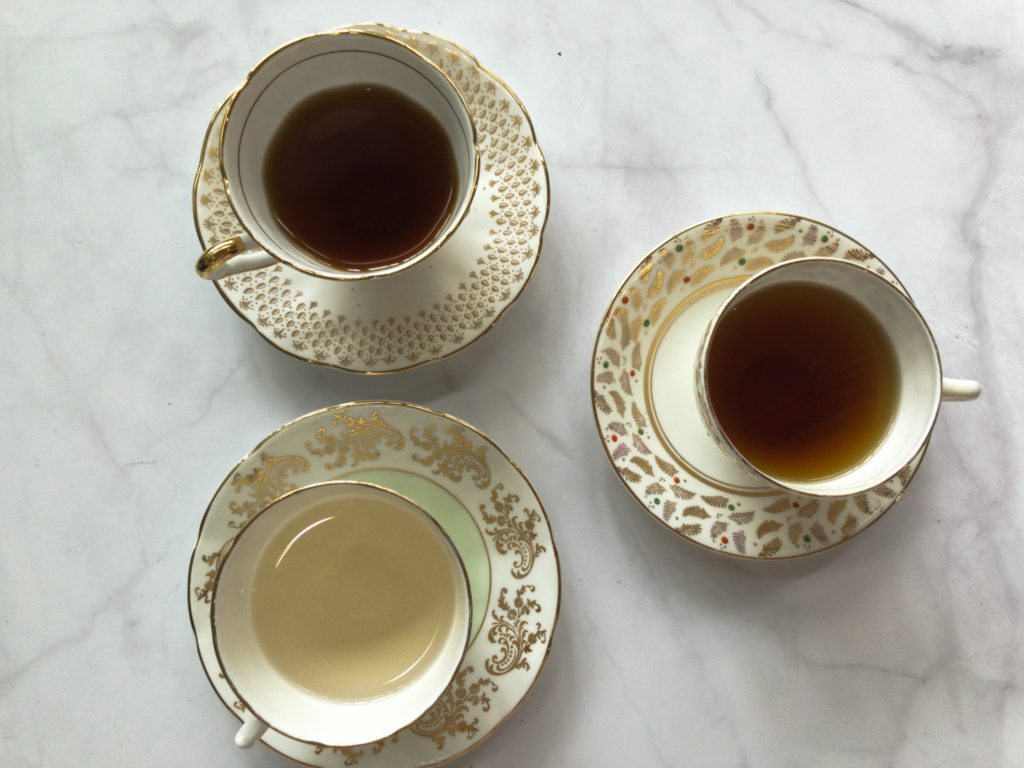
For reference, I also brewed a cup of pure rosebuds and compared it to the two. Surprisingly, the black tea was still sweeter than the cup of pure rose tisane – perhaps that’s because the black tea has the sweetness from both the rose and the black tea.
Spent Tea Leaves
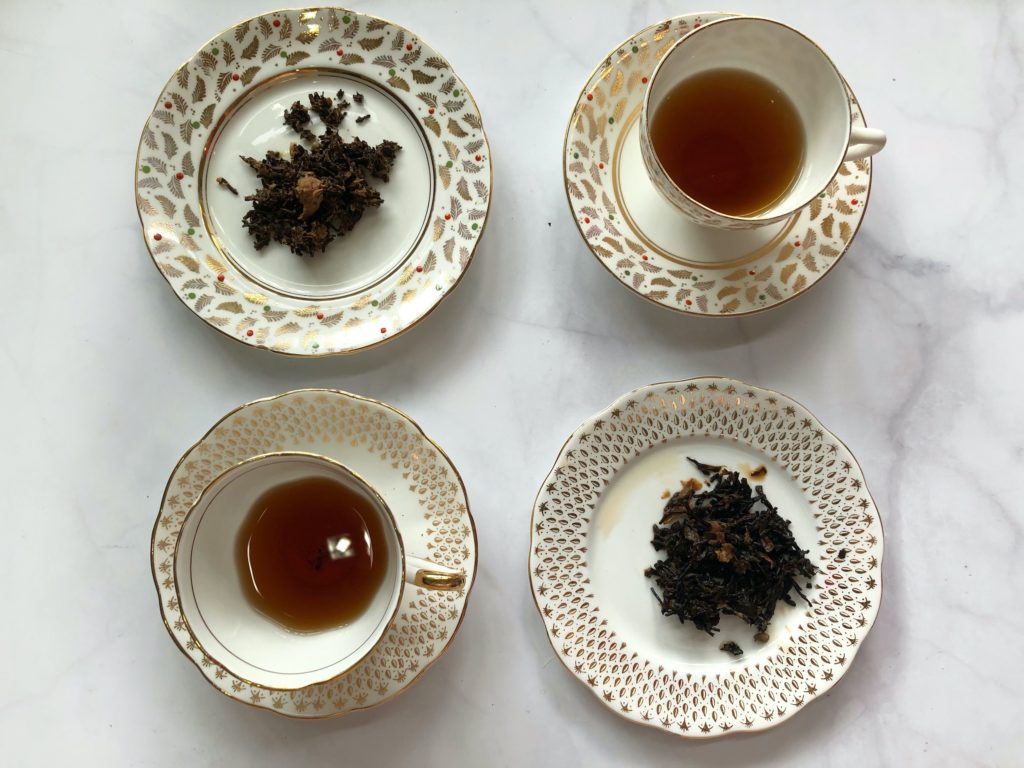
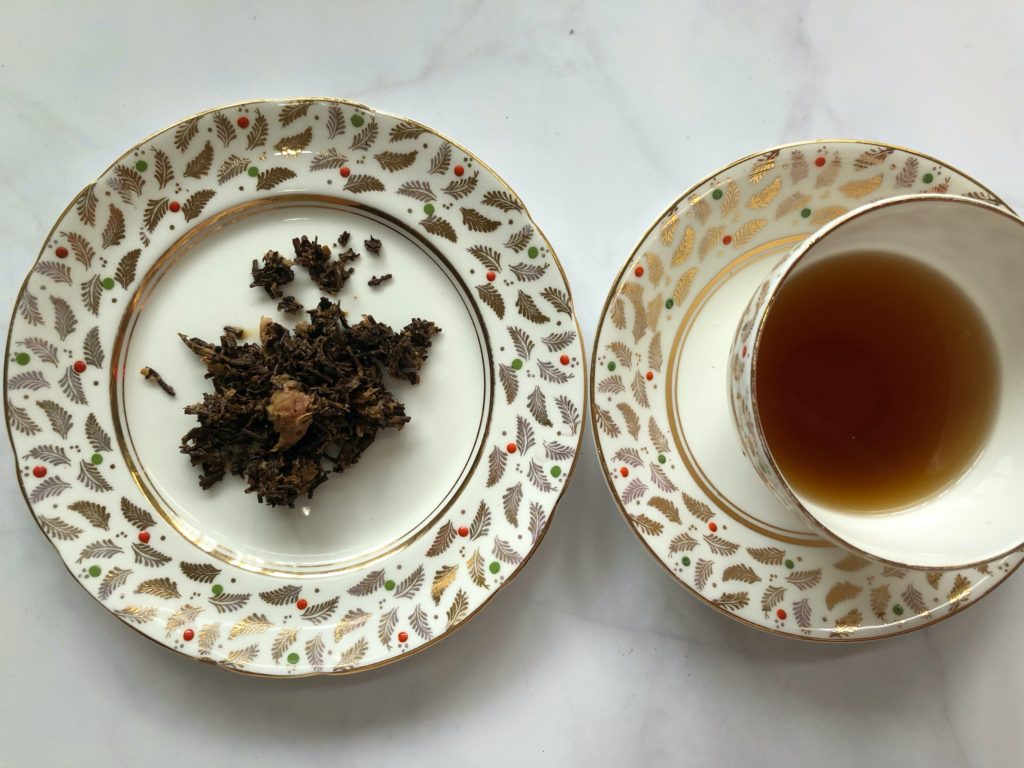
The spent leaves for the black tea – note the rosebud in the middle 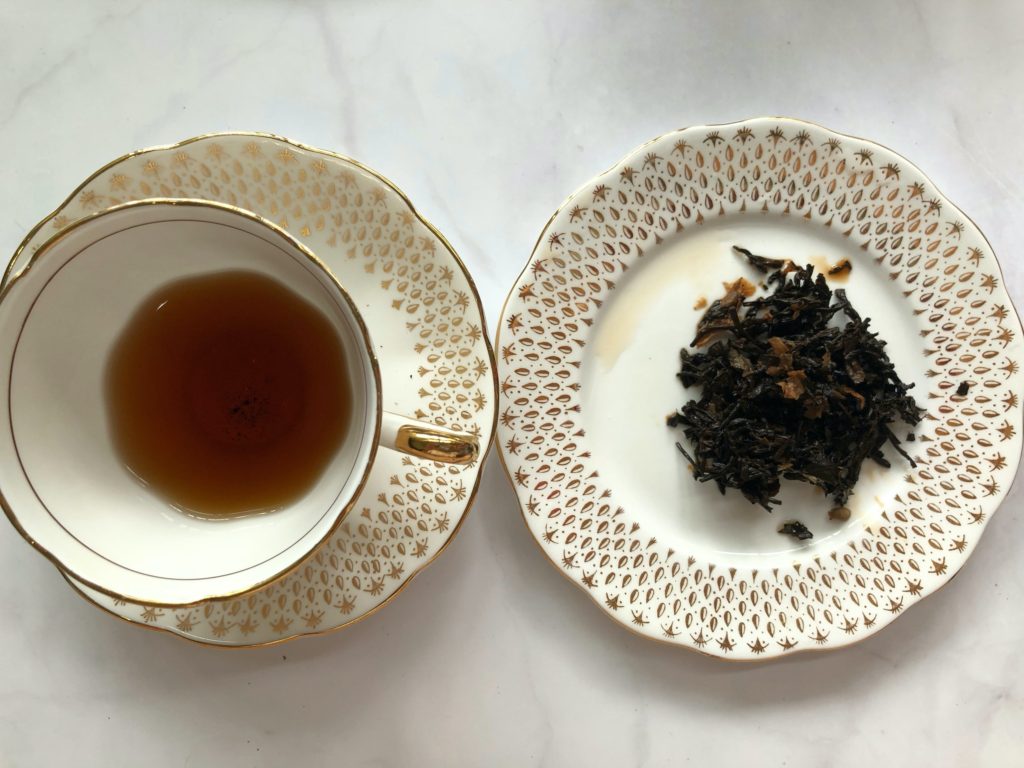
The spent leaves for the puer
Looking at the tea leaves, it seems as though there’s a lot more rose in the black tea. The puer has larger leaves and I see fewer petals (at least to the naked eye). I’m guessing that’s one of the reasons why the rose notes in the black tea were so much stronger.
Another interesting thing, although not necessarily relevant as to why the black tea had stronger rose notes, was that the leaves for the black tea were quite fragmented, almost chopped up. On the other hand, the puer had bigger, whole leaves.
Conclusions
Personally, I think that rose works to enhance the sweetness of the tea it’s paired with – the puer certainly seemed sweeter (and lighter) compared to the ripe puers that you can find in most restaurants. What interests me is the fact that the rose notes for the Twinings Golden Rose Hearts is so strong! If I were to take the ingredient list at face value, there shouldn’t be any flavourings added. So why is the rose so strong? Is it the ratio? The fact that the black tea leaves are smaller?
If you have any ideas let me know!
Related Posts
What is Tuocha?: A post I did last year about these little tea cakes (and why the heart shape is hard to find)
More Tea + Rose comparisons on Books & Brews: Comparing a black tea plus rose blend with the puer and rose!
Book Review: Ancient Caravans and Urban Chic by Jinghong Zhang – If you’d like to find out more about puer in general, this is a great book!

So I learned something new from this post. When a brew is made with ingredients that are not tea, it’s called a “tisane.”
Here in the U.S., non-tea blends are often sold as “tea” or as “herbal tea.” “Peppermint tea,” “herbal blend,” etc. I’ve heard this drives some tea enthusiasts crazy. Does it you?
I also now know what Hercule Poirot is talking about when he refers to a tisane. 🙂
While I differentiate between teas and tisanes when I’m speaking/writing, the two have been used interchangeably for so long I don’t really mind if my friends and family mix them up.
Tea brands though…. those that use the correct terms get extra points 😉
I often use “tea” with herbals/fruit blends/rooibos just because most Americans refer to these as “teas.” But it’s all about education, so I generally use both terms and eventually maybe more people will understand there’s a difference. On the other hand, if the general public uses “tea,” it means the meaning of the word has shifted (language evolves!), regardless what tea purists think LOL!
Hahaha good point about the word meaning on the importance of the general public’s perception of the word vs the tea purists’ perception. To be fair, in Chinese tea can refer to non-camillia Sinensis plant-based hot drinks too, so it’s definitely not just an English-language thing.